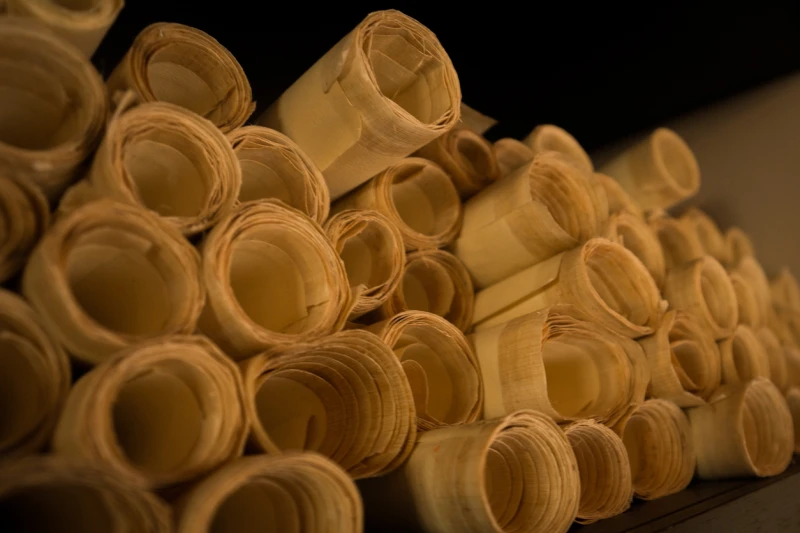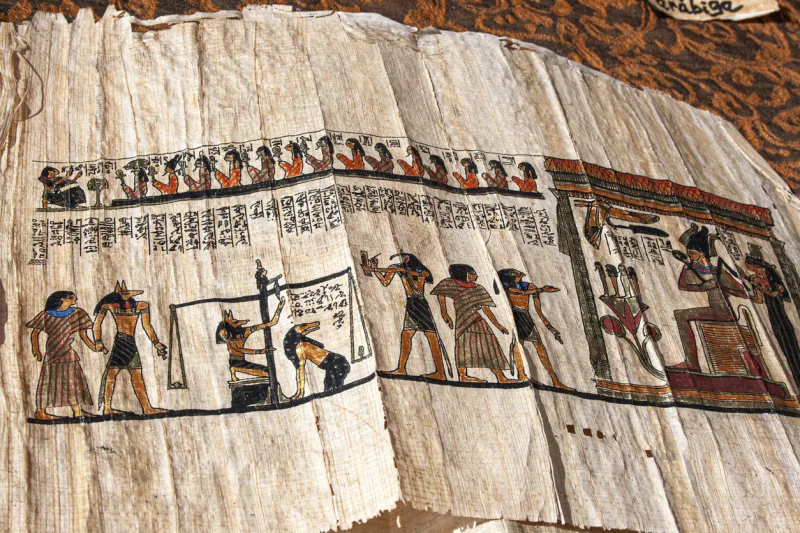The papyrus of Ancient Egypt was essential for writing, record-keeping, and religious texts. Today, travelers can explore its history and purchase authentic papyrus artwork through Egypt tour packages.
Roots of the Papyrus of Ancient Egypt
Papyrus plays an integral role in spelling out the history and story of Egypt. It is seen as one of the most invaluable sources that allows us to glean more information about Egyptian civilization. The papyrus grew in its wild habitat in the fertile Delta of the Nile River. The papyrus was mostly associated with Lower Egypt as it was the sight of most of the plant and exported in mass quantities to the rest of the Upper Egyptian areas.
Various Writing Types Used on the Papyrus of Ancient Egypt
Egypt is quite famous for its complex writing system that emerged. The invention of writing in hieroglyphs in Ancient Egypt marked an important step in the development of Ancient Egyptian civilization. Scribes in Ancient Egypt were revered as the elite of society. Literacy was seen as one of the top skills one could acquire in ancient Egyptian civilization. There was a notable ancient Egypt belief that stipulated that the god of wisdom, Toth was the inventor of writing. Writing and scribes, however, were often linked to Goddess Seshat. A wealth of different writings were used in ancient Egypt as society developed but the one that prevailed and took on mainstream popularity was the hieroglyphic writing system.
Hieroglyph Script was a form of complex picture writings that featured about 700 distinct signs. The full diversity of writings can be examined from ancient Egyptian literary sources. The hieroglyphs were written in all tupper directions in different formation from right to left or left to right or top to bottom, creating a diversity of different styles and readings throughout the span of ancient Egyptian history.

Highlight on the Egyptian Papyrus Plant
Once upon a time, the papyrus of Ancient Egypt was mostly sourced from Lower Egypt through their wild habitat at the fertile Nile Delta in the north of the country. The plant itself is a stemmed reed with a unique triangular shape. It grows to about four meters in height. However, with the passage of time, eventually the papyrus plant stopped growing in this area and is rarely available these days.
Primarily the plant was used for making parchment for writing for the Ancient Egyptians. However, it actually was very versatile and had a number of uses including in mats, roped and shoes. It even had a lot of medical purposes and uses. The papyrus plant was also used in sacrificial offerings to the gods and in other religious practices. It was used as a common motif as a representation of the afterlife and often carved or depicted in different monuments and structures, particularly shrines and temples.
The Mythological Associations of Papyrus
The papyrus of Ancient Egypt is tied to a number of popular myths. The most popular of all is the one telling the story of a peculiar incident featuring Osiris and Isis. When Osiris was killed at the hand of his brother Seth, Isis hid along with their son Horus upon the papyrus plants. Thus, the long and thick reeds of the papyrus helped protect and shield them from the evil wrath and intentions of Seth. So, the papyrus came to be associated as a symbol of Egyptian social order and harmony.

The Papyrus Sheet Making Process
The process to making the papyrus was developed over time, making it finer and higher in quality with a number of innovations and inventions. The sheets are made by layer two layers of papyrus on top of each and other and applying pressure until the gum that comes out of the plant cells breaking down turns into a paste and glues together the sheet together as a singular mass.
Further back in time, a handful of papyrus sheets were connected together to create a roll of sorts. These rolls could stretch out for many meters. The advent of the papyrus roll changed the way documents were stored and ended up spreading to libraries across the world.
The Disappearance of the Papyrus of Ancient Egypt
Papyrus played an integral role of shaping ancient Egyptian civilization, giving it, and the world, the first standard of paper. Eventually, the papyrus was mass manufactured and exported all over. However, with the advent of more efficient and developed forms of paper, the big estates that used to produce the papyrus of Ancient Egypt slowly began to disappear. Along with the disappearance of the manufacturers, the wild papyrus plant native to northern Egypt began to go extinct in that area.
Modern Egyptologists are lucky. Thanks to the dry desert landscape, a lot of ancient Papyrus was preserved and allowed scholars to study a wealth of ancient literary sources from years ago that share important information about the politics, culture and religious life of ancient Egypt.
